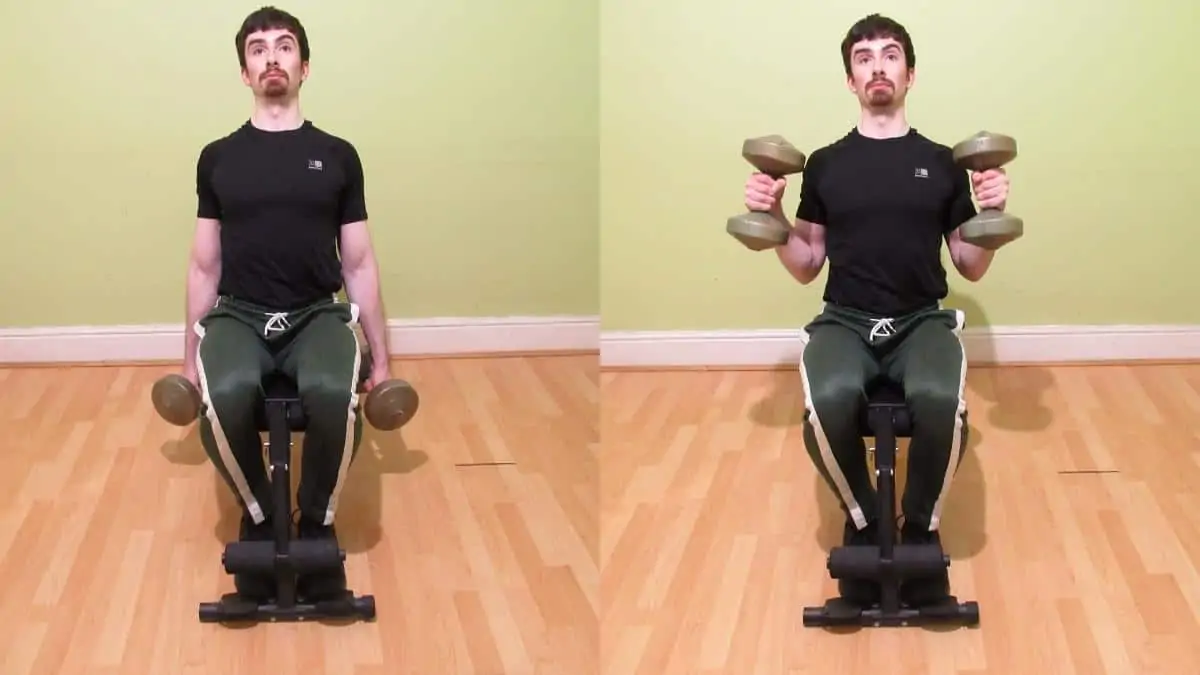Seated hammer curls are an effective exercise for building the biceps muscle because the sitting position enables you to lift more weight and thus overload your arms to a greater degree. This is because, unlike in a regular hammer curl, your core muscles don’t have to stabilize your torso when it’s already supported against the backrest of a bench.
This is why movements like the seated dumbbell curl are so effective for isolating the target muscles.
The following guide covers the proper form as well as the pros and cons of doing seated DB hammer curls for your biceps, brachialis, and brachioradialis, which are the three target muscles.
Related: Free weight bicep exercises
Seated hammer curls exercise details
- Main Muscles: Biceps brachii, brachialis, brachioradialis
- Secondary Muscles: Forearm flexors, forearm extensors
- Exercise Type: Strength
- Exercise Mechanics: Isolation
- Difficulty Level: Beginner
- Equipment Needed: Dumbbells, weight bench
How to do seated dumbbell hammer curls
- Set the backrest of an adjustable bench to 90 degrees.
- Grab two dumbbells with a neutral grip, and then sit on the bench with your back against the backrest.
- With the dumbbells by your sides, curl the weights toward your shoulders.
- Keep curling until your biceps and forearms make contact.
- Squeeze your arm muscles momentarily and then lower the weights until your elbows are locked out.
- Repeat for 3-4 sets of 8-12 reps.
Seated hammer curl pros and cons
Seated dumbbell hammer curls have some distinct advantages over the regular version and certainly over the decline hammer curl. However, there are a couple of disadvantages that you need to take into account before deciding whether this exercise is feasible to include in your workout routine.
Pro: Better bicep overloading
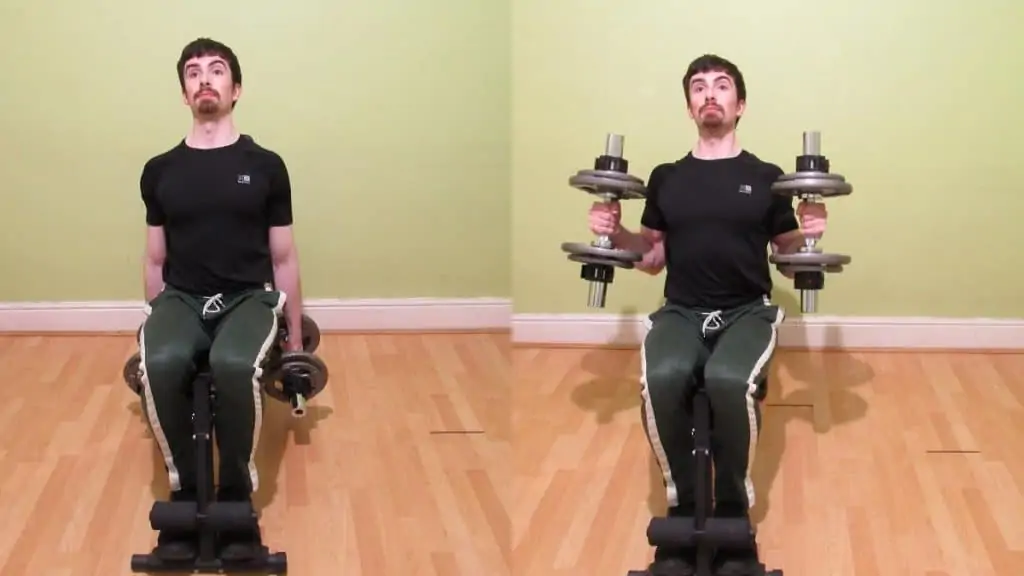
Compared to the regular version, the seated hammer curl lets you overload your biceps with more resistance and thus potentially stimulate faster muscle growth (presuming good form). This is because your core doesn’t have to do as much work in the seared position, which means that you can focus purely on training your biceps.
While barbell hammer curls and the like can work, they’re usually not as effective as the seated dumbbell hammer curl because the former is virtually impossible to perform properly while you’re sitting down.
So if you’re performing hammer curls with hypertrophy in mind, then it’s optimal to perform the exercise in a position where the target muscles are most isolated, which is to say, in a sitting position. [1]
You can also do a barbell sitting curl if you want to shift the focus onto the outer muscle fibers of your biceps instead of your brachialis and brachioradialis.
Con: Harder set up
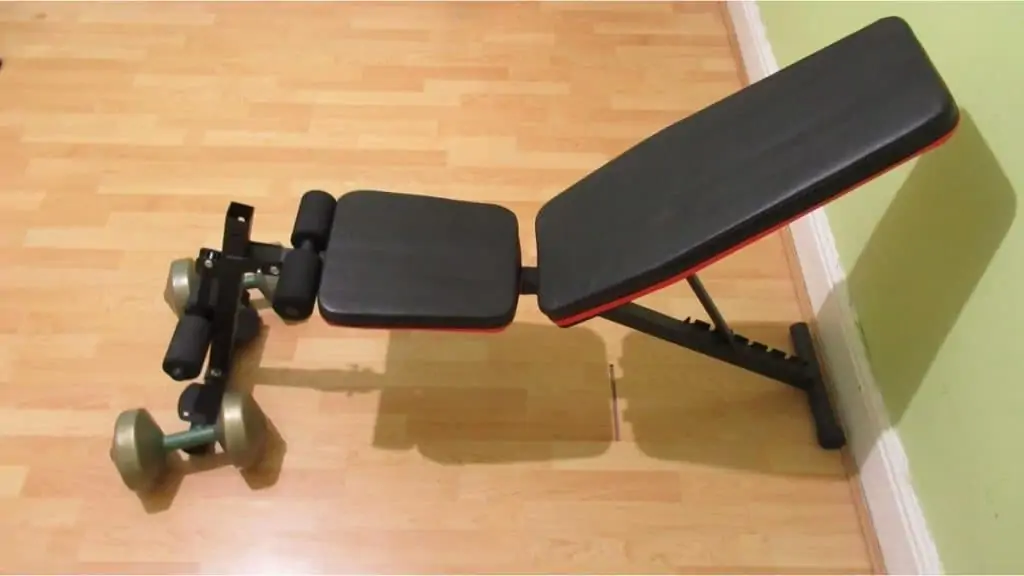
If you’re performing sitting hammer curls, especially during your chest and bis routine, then there’s no getting around it: You’re going to need access to an adjustable weight bench.
So if you’re training in a busy commercial gym, then there’s always a chance that you might have to slow down your workout until a bench becomes available, which could reduce your training motivation, and which will certainly waste your time at the very least.
With the regular version, however, you just grab some dumbbells and start lifting. This convenience also means that intensity techniques, such as drop sets, become much more accessible because the dumbbell rack is in easier reach when you’re standing than when you’re sat down.
Pro: Easier to maintain good form
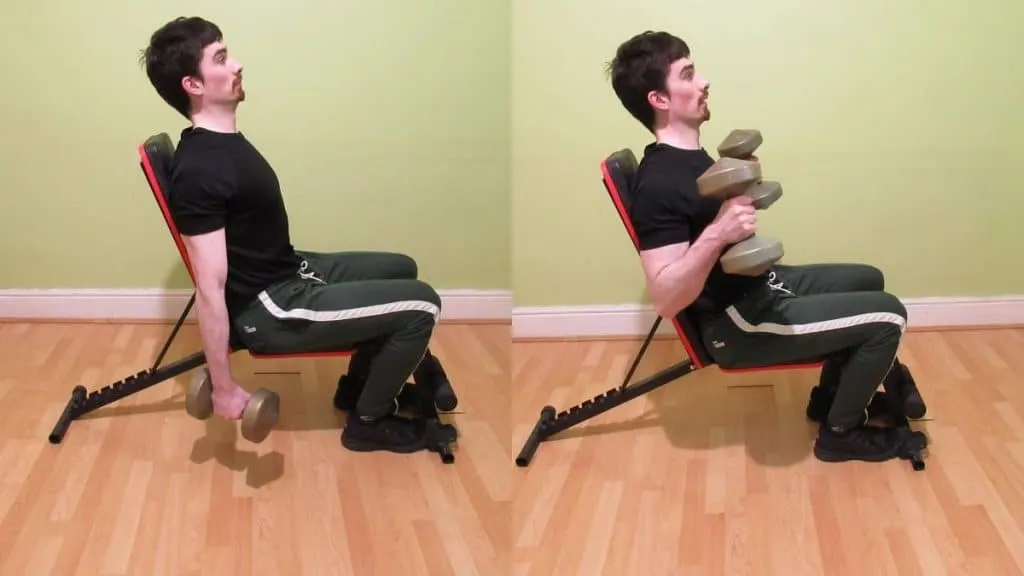
When you perform seated hammer curls, you only have your arms to think about because the backrest naturally keeps your core stable.
But when you do the exercise stood up, you’re heavily relying on your ab muscles if you’re lifting heavy. This isn’t necessarily bad, but it does make it harder to focus on your biceps as the weights become more challenging.
You can also try the seated cable pulley biceps curl if you want to challenge yourself with constant tension and get a great pump.
Con: Lower strength carryover

Movements such as standing plate hammer curls and the hammer curl shoulder press are all performed in a standing position and, as such, require a relatively high degree of core stability to perform correctly.
So by doing seated dumbbell hammer curls, you might find that you’re significantly weaker when you try to perform other types of hammer curls that require a higher degree of core strength.
Ultimately, you need to decide what’s more important to you: maximizing muscle growth via isolation or supercharging your core strength by performing all your exercises stood up? [2]
Pro: Builds the brachialis and brachioradialis
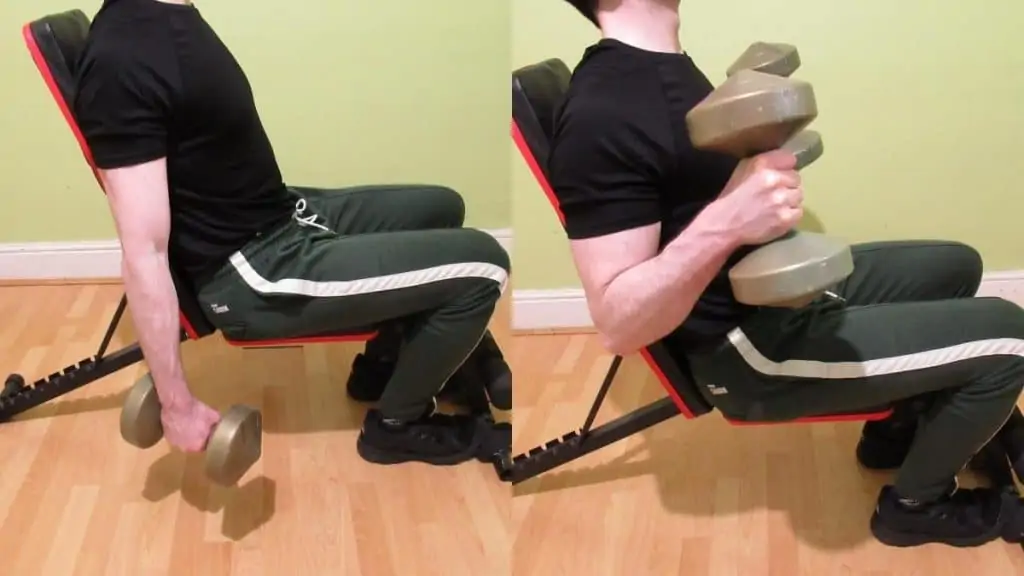
All hammer curls work the brachialis and brachioradialis muscles. However, thanks to the sitting position, which naturally makes it easier to isolate your arms, seated dumbbell hammer curls take isolation of these target muscles to the next level.
This is important because many lifters already have decent biceps but comparatively weaker brachialis and brachioradialis development. So if you want arms that are not only big but proportional too, then you definitely want to perform hammer curls in the position that’s most conducive to muscle isolation, which for most people, is a sitting position.
The verdict: Are sitting hammer curls a good bicep builder?
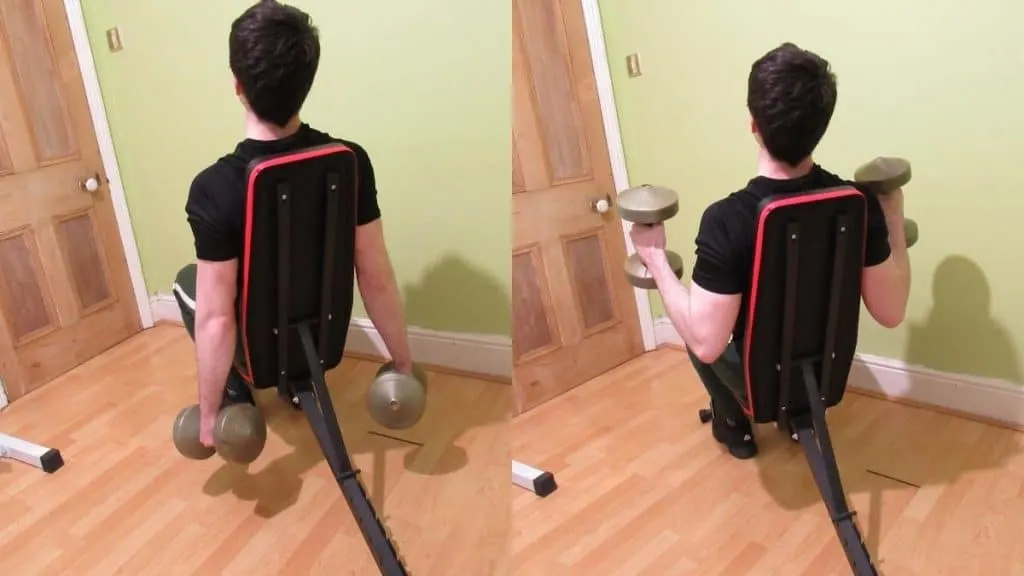
Seated hammer curls are a bodybuilder’s best friend because they isolate your biceps, brachialis, and brachioradialis better than any other type of hammer curl. This is because when you do them in a seated position, you don’t have to think about keeping your core tight because the bench provides the necessary stability by default.
As a result, seated hammer curls let you focus 100% of your attention on blasting your brachialis and biceps, which could lead to faster muscle growth if your diet and recovery are good.
Sitting hammer curls also allow you to lift more weight because when you only have to focus on a few small muscles, your nervous system can output all its force to that particular area, namely your arms.
With regular hammer curls, on the other hand, your force output is always divided between your core muscles and your arms muscles. So it can be harder to lift truly heavy weights when your attention is effectively split in half.
References
- Chilibeck, P. D., Calder, A. W., Sale, D. G., & Webber, C. E. (1997). A comparison of strength and muscle mass increases during resistance training in young women. European Journal of Applied Physiology, 77(1–2), 170–175. https://doi.org/10.1007/s004210050316
- Elson, L. (2018, September 6). Understanding and improving core strength. Harvard Health Blog. https://www.health.harvard.edu/blog/understanding-and-improving-core-strength-2018090414662

